Do you have a question about the Panasonic VIERA TH-L32X30A and is the answer not in the manual?
Guidelines for safe and stable installation of the TV to prevent hazards.
Additional notes and important information regarding TV operation and usage.
Lists and describes the items supplied with the TV set.
Information on accessories available for separate purchase.
Identifies physical controls and connection ports on the TV unit.
Explains the on-screen display guide and its usage for navigation.
Identifies buttons and functions of the remote control.
Explains additional functions like Hold and Display Subtitles.
Sets the TV to turn off automatically after a set period.
Explains information displayed for digital TV channels.
Explains information displayed for analogue TV channels.
Details the meanings of various messages and features shown in the banner.
How to access and change programme-specific settings.
Allows switching to the previously viewed channel or input mode.
Explains the channel-based layout of the TV Guide.
Explains the time-based layout of the TV Guide.
How to view channels organized in favourite lists.
How to get more information about a selected program.
Details the available picture adjustments and configurations.
Settings for adjusting white balance for image quality.
Settings for adjusting gamma curves for image quality.
Controls image display size and fit for 16:9 aspect ratio.
Resets picture settings to their default values.
Adjusts audio frequency levels for preferred sound quality.
Configures surround sound settings for enhanced audio effects.
Optimizes sound based on TV's distance from the wall.
Sets priority for Dolby Digital or MPEG audio tracks.
Switches the TV to a wide view for various input resolutions.
Adjusts horizontal and vertical position settings for DVI input.
Sets the time until the TV automatically goes into Standby mode.
Automatically sets the TV to energy-saving modes.
Locks channels/inputs to control viewing access.
Functions for channel tuning, editing, and list management.
Configures banner display timeout and game time display.
Resets all TV settings to their original condition.
Downloads and installs new TV software.
Configures auto standby, power save, region, and daylight saving time.
Steps for tuning and managing digital TV channels.
Steps for tuning and managing analogue TV channels.
How to perform auto tuning using TV side panel buttons.
Create and manage favourite channel lists for Digital TV.
Hide or reveal channels and edit channel positions.
How to change the position of a channel in the list.
Automatically tunes all available digital TV channels.
Manually tunes individual digital TV channels.
Updates the channel list while keeping settings.
Checks the quality and strength of digital TV signals.
Skip or edit analogue channels, change names, and move positions.
Automatically tunes all available analogue TV channels.
Manually tunes individual analogue TV channels.
Locks channels/inputs to control viewing access.
Sets parental rating restrictions for content.
How to change the Child Lock PIN number.
Names input modes for easier identification and selection.
Automatically searches for and downloads software updates.
Manually searches for new TV software versions.
Instructions for inserting and removing SD cards and USB flash memory.
Selects the type of content (Photo, Video, Music) to view.
Switches between different connected media devices.
Organizes photos by folder, date, or month.
Shows details of a selected photo.
Displays photos one by one.
Plays photos as a slideshow.
Configures slideshow settings like transition and music.
Selects the display frame for slideshow photos.
Applies colour effects and selects transition effects for photos.
Selects background music for photo slideshows.
Explains playback controls like rewind, pause, and fast forward.
Changes the aspect ratio of the video playback.
Configures video playback settings like preview and repeat.
Allows checking and changing playback status.
Selects the digital audio output signal format.
Configures video content settings like multi-audio and subtitles.
Configures music playback repeat modes.
Plays all files within a selected folder.
Plays a selected file from the media.
Explains playback controls for music files.
Configures music playback repeat modes.
Information about DLNA certification and its benefits.
Requirements for setting up a DLNA certified media server.
Details on connecting the TV to a network and configuring settings.
Guide to accessing internet content features.
Details wired and wireless network connection setup.
Details direct LAN cable connection for DLNA features.
Details direct connection to modem for internet access.
Important notes regarding network connections and ISPs.
Configures network settings for wired LAN connections.
Automatically acquires IP and DNS addresses.
Automatically acquires DNS address.
Configures the proxy server address (Host).
Configures the proxy server port number.
Performs a test to check the network connection status.
Tests wireless network connection status.
Updates TV software via the internet.
Information about the MAC address for network identification.
Selects a media server from the list to access content.
Selects photo or video files from the media server.
Notes on playing files, non-playable files, and network reconnections.
Displays photos one by one.
Plays photos as a slideshow.
Explains playback controls like rewind, pause, and fast forward.
Changes the aspect ratio of the video playback.
Configures slideshow settings like transition and music.
Configures audio output settings for video content.
Configures video content settings like multi-audio and subtitles.
Configures music playback repeat modes.
Using a USB keyboard for character input.
Notes on software updates, service continuity, and content access.
Explains VIERA Link and HDAVI Control features.
Summarizes features available with connected equipment.
Diagrams showing how to connect various equipment.
Downloads channel settings to recorders.
Automatic input switching for connected equipment.
Automatically turns on/off connected equipment.
Reduces standby power consumption of connected equipment.
Allows pausing and resuming live TV programs.
Records the current program immediately using DIGA Recorder.
Accesses and controls connected equipment menus via TV remote.
How to manage multiple devices or non-VIERA Link equipment.
Controls theatre speaker volume and mute function.
Selects between theatre speakers and TV speakers.
How to enjoy multi-channel sound with amplifiers.
Shows which equipment connects to which TV terminal.
Pin assignments and details for the HDMI terminal.
Connecting VCR/DVD Recorder for playback.
Connecting HDMI equipment like recorders/players.
Connecting a DVD player for viewing and listening.
Connecting an amplifier and speaker system.
Connecting USB devices like flash drives.
Connecting camcorders or game consoles.
Connecting headphones to the TV.
Connecting the TV to a network and PC.
Lists channel allocations for analogue TV reception.
Explains digital TV content rating system.
How to select stereo or bilingual sound modes.
Lists supported HDMI features like audio and video signals.
How to connect equipment with DVI output using an adapter.
Guidelines for connecting a PC to the TV.
Lists supported input signals for COMPONENT and HDMI.
Supported PC input signals via D-sub 15-pin connector.
Supported PC input signals via HDMI terminal.
Details SD card formats, types, and handling precautions.
Explains common messages and their meanings in Media Player.
Lists supported photo file formats and restrictions.
Lists supported video file containers, codecs, and restrictions.
Lists supported music file codecs and restrictions.
How to use subtitle files with DivX videos.
Information on registering for DivX Video-on-Demand.
Explains content playback limits for DivX rentals.
Explains network error messages and troubleshooting steps.
Recommendations for connecting USB devices.
Lists tested USB device combinations.
Instructions for cleaning the TV's display, cabinet, and pedestal.
Precautions to avoid damaging the TV surfaces.
Instructions for cleaning the mains plug.
Addresses issues with white spots, shadow images, or noise.
Troubleshoots problems with no image or sound.
Guides on how to handle error messages.
Addresses blurry or distorted picture quality.
Troubleshoots unusual sound or picture with HDMI-connected equipment.
Resolves issues with connecting to the network.
Troubleshoots inability to select files during DLNA or access internet.
Connecting devices requiring antenna connection for digital TV.
Addresses pixelation or 'No Signal' issues on channels.
Explains reasons for the TV entering standby mode automatically.
Troubleshoots remote control issues.
Specifications related to power, display panel size, and resolution.
Lists connection terminals, PC signal types, and frequencies.
Specifications for audio output, headphones, and physical dimensions.
Details the 12-month warranty period and service conditions.
Lists exclusions and conditions not covered by warranty.
Steps for claiming warranty service and locating service centers.
Mentions consumer guarantees and rights under Australian Law.
Space to record the product's model number.
Space to record the product's serial number.
Guidelines for safe and stable installation of the TV to prevent hazards.
Additional notes and important information regarding TV operation and usage.
Lists and describes the items supplied with the TV set.
Information on accessories available for separate purchase.
Identifies physical controls and connection ports on the TV unit.
Explains the on-screen display guide and its usage for navigation.
Identifies buttons and functions of the remote control.
Explains additional functions like Hold and Display Subtitles.
Sets the TV to turn off automatically after a set period.
Explains information displayed for digital TV channels.
Explains information displayed for analogue TV channels.
Details the meanings of various messages and features shown in the banner.
How to access and change programme-specific settings.
Allows switching to the previously viewed channel or input mode.
Explains the channel-based layout of the TV Guide.
Explains the time-based layout of the TV Guide.
How to view channels organized in favourite lists.
How to get more information about a selected program.
Details the available picture adjustments and configurations.
Settings for adjusting white balance for image quality.
Settings for adjusting gamma curves for image quality.
Controls image display size and fit for 16:9 aspect ratio.
Resets picture settings to their default values.
Adjusts audio frequency levels for preferred sound quality.
Configures surround sound settings for enhanced audio effects.
Optimizes sound based on TV's distance from the wall.
Sets priority for Dolby Digital or MPEG audio tracks.
Switches the TV to a wide view for various input resolutions.
Adjusts horizontal and vertical position settings for DVI input.
Sets the time until the TV automatically goes into Standby mode.
Automatically sets the TV to energy-saving modes.
Locks channels/inputs to control viewing access.
Functions for channel tuning, editing, and list management.
Configures banner display timeout and game time display.
Resets all TV settings to their original condition.
Downloads and installs new TV software.
Configures auto standby, power save, region, and daylight saving time.
Steps for tuning and managing digital TV channels.
Steps for tuning and managing analogue TV channels.
How to perform auto tuning using TV side panel buttons.
Create and manage favourite channel lists for Digital TV.
Hide or reveal channels and edit channel positions.
How to change the position of a channel in the list.
Automatically tunes all available digital TV channels.
Manually tunes individual digital TV channels.
Updates the channel list while keeping settings.
Checks the quality and strength of digital TV signals.
Skip or edit analogue channels, change names, and move positions.
Automatically tunes all available analogue TV channels.
Manually tunes individual analogue TV channels.
Locks channels/inputs to control viewing access.
Sets parental rating restrictions for content.
How to change the Child Lock PIN number.
Names input modes for easier identification and selection.
Automatically searches for and downloads software updates.
Manually searches for new TV software versions.
Instructions for inserting and removing SD cards and USB flash memory.
Selects the type of content (Photo, Video, Music) to view.
Switches between different connected media devices.
Organizes photos by folder, date, or month.
Shows details of a selected photo.
Displays photos one by one.
Plays photos as a slideshow.
Configures slideshow settings like transition and music.
Selects the display frame for slideshow photos.
Applies colour effects and selects transition effects for photos.
Selects background music for photo slideshows.
Explains playback controls like rewind, pause, and fast forward.
Changes the aspect ratio of the video playback.
Configures video playback settings like preview and repeat.
Allows checking and changing playback status.
Selects the digital audio output signal format.
Configures video content settings like multi-audio and subtitles.
Configures music playback repeat modes.
Plays all files within a selected folder.
Plays a selected file from the media.
Explains playback controls for music files.
Configures music playback repeat modes.
Information about DLNA certification and its benefits.
Requirements for setting up a DLNA certified media server.
Details on connecting the TV to a network and configuring settings.
Guide to accessing internet content features.
Details wired and wireless network connection setup.
Details direct LAN cable connection for DLNA features.
Details direct connection to modem for internet access.
Important notes regarding network connections and ISPs.
Configures network settings for wired LAN connections.
Automatically acquires IP and DNS addresses.
Automatically acquires DNS address.
Configures the proxy server address (Host).
Configures the proxy server port number.
Performs a test to check the network connection status.
Tests wireless network connection status.
Updates TV software via the internet.
Information about the MAC address for network identification.
Selects a media server from the list to access content.
Selects photo or video files from the media server.
Notes on playing files, non-playable files, and network reconnections.
Displays photos one by one.
Plays photos as a slideshow.
Explains playback controls like rewind, pause, and fast forward.
Changes the aspect ratio of the video playback.
Configures slideshow settings like transition and music.
Configures audio output settings for video content.
Configures video content settings like multi-audio and subtitles.
Configures music playback repeat modes.
Using a USB keyboard for character input.
Notes on software updates, service continuity, and content access.
Explains VIERA Link and HDAVI Control features.
Summarizes features available with connected equipment.
Diagrams showing how to connect various equipment.
Downloads channel settings to recorders.
Automatic input switching for connected equipment.
Automatically turns on/off connected equipment.
Reduces standby power consumption of connected equipment.
Allows pausing and resuming live TV programs.
Records the current program immediately using DIGA Recorder.
Accesses and controls connected equipment menus via TV remote.
How to manage multiple devices or non-VIERA Link equipment.
Controls theatre speaker volume and mute function.
Selects between theatre speakers and TV speakers.
How to enjoy multi-channel sound with amplifiers.
Shows which equipment connects to which TV terminal.
Pin assignments and details for the HDMI terminal.
Connecting VCR/DVD Recorder for playback.
Connecting HDMI equipment like recorders/players.
Connecting a DVD player for viewing and listening.
Connecting an amplifier and speaker system.
Connecting USB devices like flash drives.
Connecting camcorders or game consoles.
Connecting headphones to the TV.
Connecting the TV to a network and PC.
Lists channel allocations for analogue TV reception.
Explains digital TV content rating system.
How to select stereo or bilingual sound modes.
Lists supported HDMI features like audio and video signals.
How to connect equipment with DVI output using an adapter.
Guidelines for connecting a PC to the TV.
Lists supported input signals for COMPONENT and HDMI.
Supported PC input signals via D-sub 15-pin connector.
Supported PC input signals via HDMI terminal.
Details SD card formats, types, and handling precautions.
Explains common messages and their meanings in Media Player.
Lists supported photo file formats and restrictions.
Lists supported video file containers, codecs, and restrictions.
Lists supported music file codecs and restrictions.
How to use subtitle files with DivX videos.
Information on registering for DivX Video-on-Demand.
Explains content playback limits for DivX rentals.
Explains network error messages and troubleshooting steps.
Recommendations for connecting USB devices.
Lists tested USB device combinations.
Instructions for cleaning the TV's display, cabinet, and pedestal.
Precautions to avoid damaging the TV surfaces.
Instructions for cleaning the mains plug.
Addresses issues with white spots, shadow images, or noise.
Troubleshoots problems with no image or sound.
Guides on how to handle error messages.
Addresses blurry or distorted picture quality.
Troubleshoots unusual sound or picture with HDMI-connected equipment.
Resolves issues with connecting to the network.
Troubleshoots inability to select files during DLNA or access internet.
Connecting devices requiring antenna connection for digital TV.
Addresses pixelation or 'No Signal' issues on channels.
Explains reasons for the TV entering standby mode automatically.
Troubleshoots remote control issues.
Specifications related to power, display panel size, and resolution.
Lists connection terminals, PC signal types, and frequencies.
Specifications for audio output, headphones, and physical dimensions.
Details the 12-month warranty period and service conditions.
Lists exclusions and conditions not covered by warranty.
Steps for claiming warranty service and locating service centers.
Mentions consumer guarantees and rights under Australian Law.
Space to record the product's model number.
Space to record the product's serial number.
| Screen Size | 32 inches |
|---|---|
| Resolution | 1366 x 768 |
| Display Type | LCD |
| Aspect Ratio | 16:9 |
| Brightness | 400 cd/m² |
| HDMI Ports | 3 |
| USB Ports | 1 |
| Backlight Technology | CCFL |
| Viewing Angle | 178° |

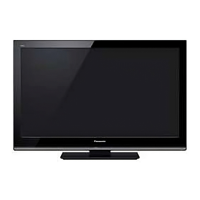
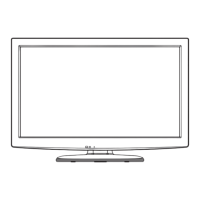
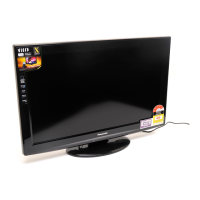
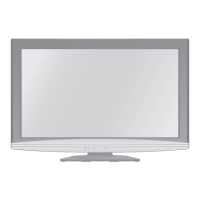
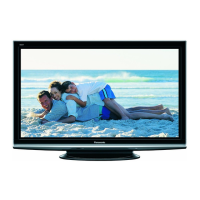
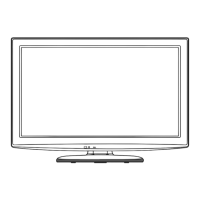



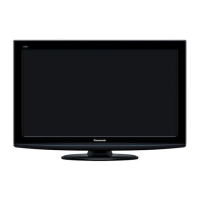
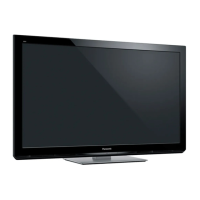
